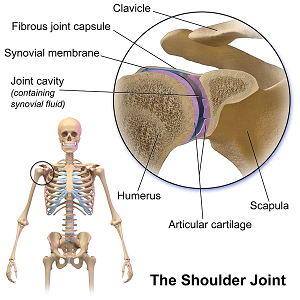
SHOULDER JOINT
Shoulder Joint
The shoulder consists of two joints: the glenohumeral joint which is the ball and soccer component and the acromio-clavicular joint, which is the joint between the clavicle (collar bone) and part of the scapula (shoulder blade) known as the acromion. There is also a pseudo joint which is the region between the scapula and rib cage, Which is essential for shoulder function. The shoulder needs to satisfy large complex movements, while providing support and stability during weight bearing activities of shoulder, elbow wrist and hand.
Symptoms of shoulder dysfunction.
Pain: When pain is the chief complaint, its important to diagnose if its Long or short term pain. Is the pain due to a positional relationship. Does the pain occur on certain movements, like throwing a ball or overhead positions. Is the pain associated with trauma or is misuse or over use the culprit.
Weakness and instability: These complaints may be isolated or accompany other complaints.
Associated neck pain: May have cervical nerve root involvement. M uncles around the neck may be weak and unstable.
Other symptoms include:
- Shoulder joint stiffness.
- Inability to rotate arm.
- Persistent pain and inflammation.
- Shoulder pain due to sleeping.
- Looseness and popping within the shoulder joint.
Causes of shoulder dysfunction.
- Referred pain from cervical and thoracic facet (spinal) joints.
- Referred pain from muscle trigger points.
- Radicular pain from cervical nerve root compression.
- Peripheral and brachial nerve plexus entrapment.
- Localised causes; such as trauma, overuse and arthritis.
- Referred pain from visceral sources, like gall bladder, diaphragm, lungs, or heart.
- Impingement syndromes.
- Tendonitis.
Often many of these causes overlap and more than one may occur simultaneously.

